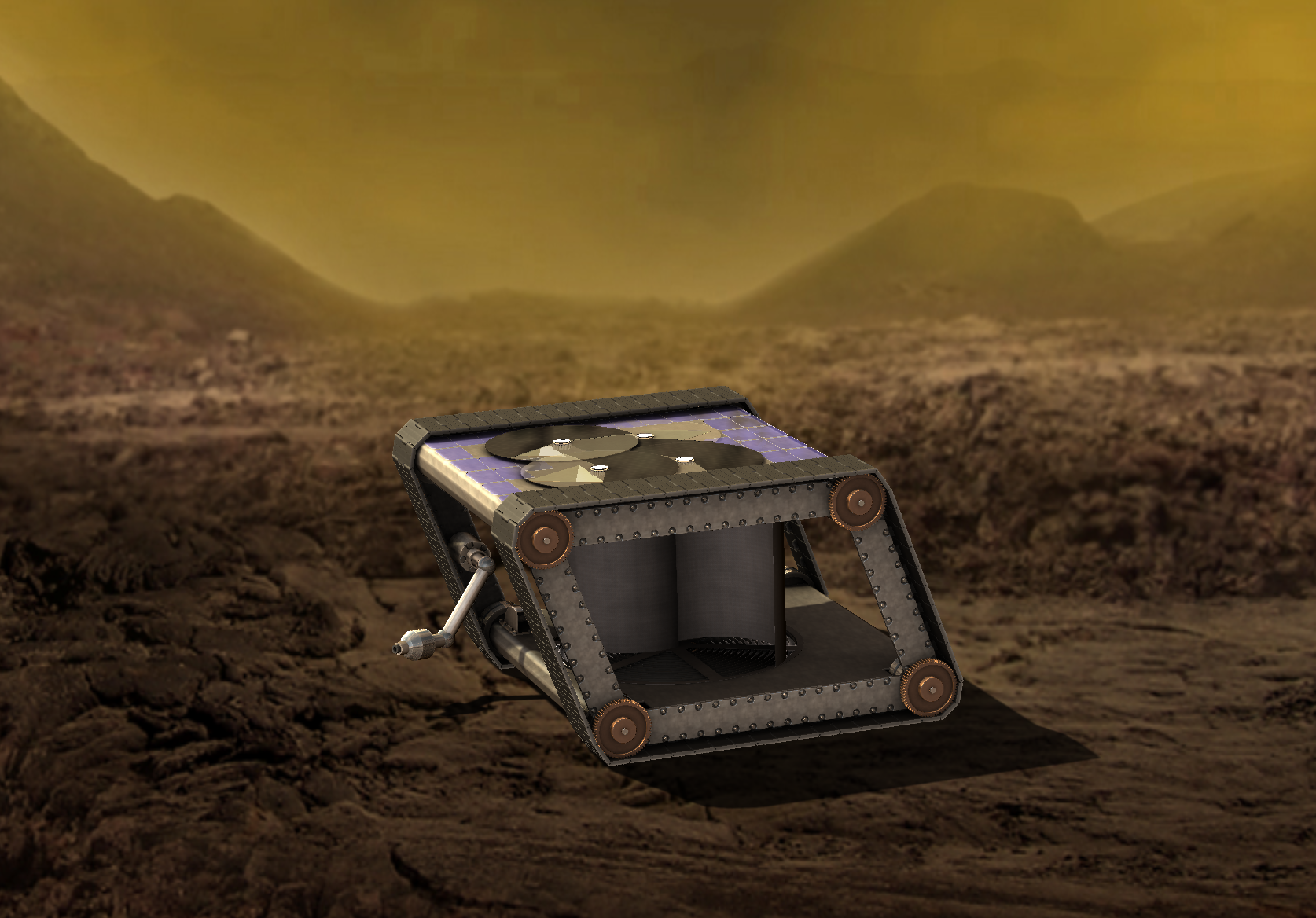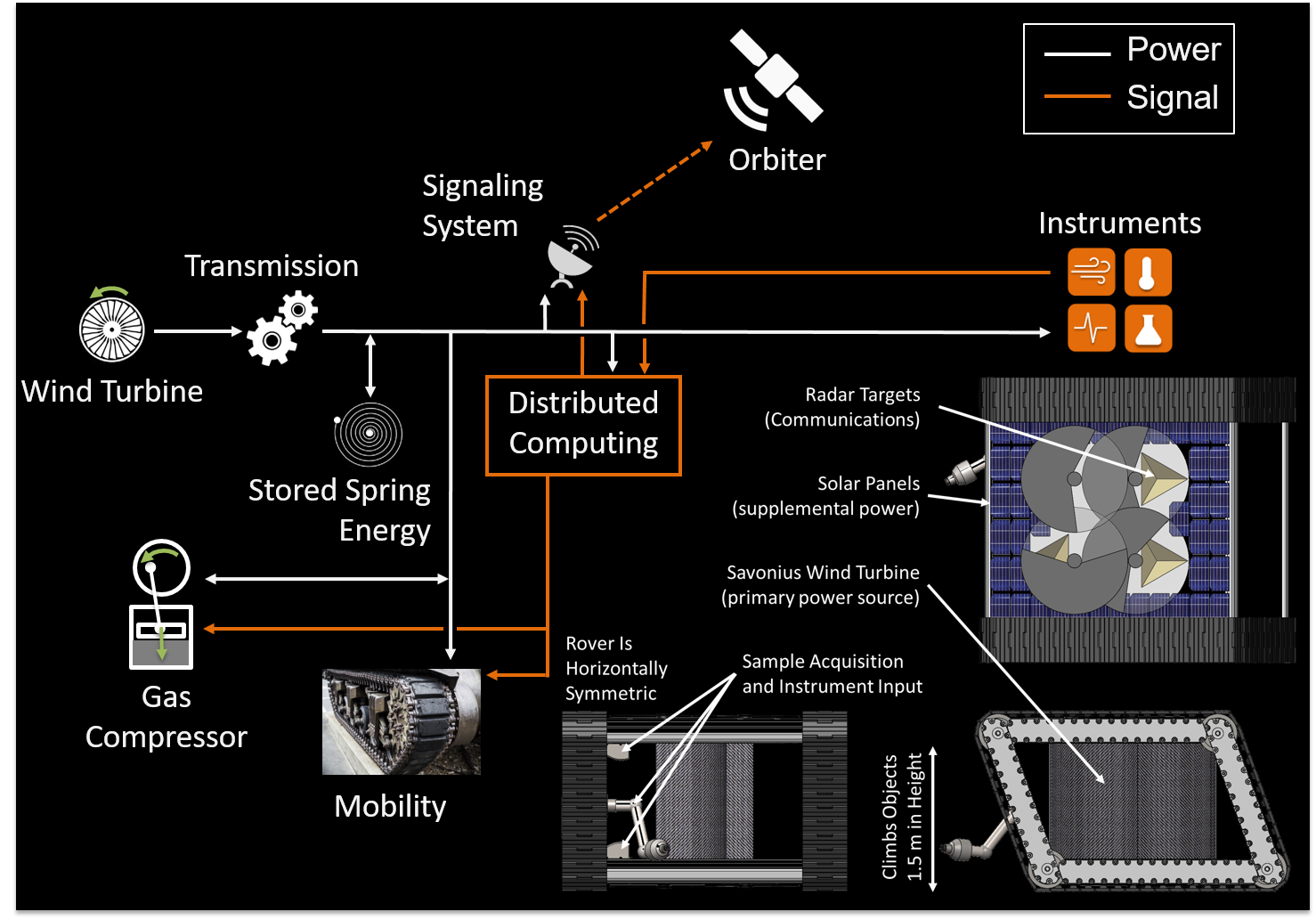
Such is our fascination with Mars that it’s easy to assume that it’s our closest neighbour. The subject of songs, books and films, the Red Planet has been intensely studied by orbiting probes, landers and rovers. It’s currently the only body in the universe that we know of that’s entirely populated by robots; and it’s the target for projected crewed missions in future decades.
But Mars isn’t our nearest neighbour. That distinction goes to Venus, which at its closest is around 25 million miles (40 million km) away, compared with Mars’s closest approach at 34 million miles (56 million km).
"We’re looking for an Earth 2.0 elsewhere in the universe. They’re good candidates to have evolved life, and we might want to try to send humans there one day. The question is, why is Venus Earth’s evil twin sister?"Jonathan Sauder, JPL
We know comparatively little about Venus, because it is so difficult to study. The planet’s surface is shrouded by a thick layer of opaque clouds, preventing its surface from being visible from Earth or even from orbit. Surface conditions are hellish. The temperature reaches 475°C, above the melting point of lead, and atmospheric pressure is more than 90 times that on Earth, enough to crush the hull of a nuclear submarine. Only ten landers have ever reached the surface, the most recent in 1985. Thanks to the temperature and the corrosive properties of the high-pressure CO2 atmosphere, the longest any probe has stayed functional is two hours and seven minutes, achieved by the Soviet Venera 13 lander in 1982. No rovers have ever been sent to Venus.

But interest in the planet is increasing, as we discover more planets in orbit around other stars. “We’re looking for an Earth 2.0 elsewhere in the universe, and you can imagine we’d like to know if they can support life, for two reasons: they’re good candidates to have evolved their own life, and we might want to try to send humans there one day,” explained Jonathan Sauder, a mechatronics engineer at NASA’s Jet Propulsion Laboratory (JPL) in Pasadena, California, which designs the Agency’s exploration machines. “But we have an Earth 2.0 right here in our own solar system. Earth and Venus have amazing similarities: they’re about the same size; they have similar composition, similar gravity; Venus is slightly closer to the sun but it’s still in the theoretically habitable zone, so the question is, why is Venus Earth’s evil twin sister?”
Venus tells us that just being in what’s sometimes called the Goldilocks Zone, because distance from the star means that conditions should be ‘just right’ for liquid water on the surface and therefore for the processes that started life on Earth take place, is no guarantee that those conditions actually exist. “It’s so very similar to Earth but it’s gone entirely south and it’s entirely caustic towards life. Understanding Venus can be incredibly important to us for finding out how planets become the way they are,” Sauder said. “We now know that most stars have planets around them, and we want understand which planets would be good candidates for life and which would be poor.”
Ditch electricity. Go mechanical
To learn why Venus is the way it is, we need to go back there, and preferably with a lander that can last a long time. Rovers are more effective explorers than static landers, capable of moving up rocky slopes that allow study of geological features that have evolved over time; sampling these would give clues as to how the atmosphere has changed. But such are the challenges to equipment that a radically different approach will be required to that which works on Mars.
Conventional electronics won’t work on Venus, and the temperatures are a challenge even to anything electrical, so Sauder and his colleagues are investigating a new — or rather old — approach: Ditch electricity. Go mechanical. This is the concept behind a project called AREE (Automaton Rover for Extreme Environments), which could have additional applications millions of miles away from Venus and even here on Earth.
“I was working on another design study for project with a group of mechanical engineers, and in a coffee break we were tossing around ideas and talking about mechanical computers,” Sauder recalls. Such systems can be quite complex, such as the Antikythera Mechanism, a complex arrangement of bronze gears and dials made in Greece around 200 BC that could calculate the position of the moon, five planets and several stars.
That fateful coffee-break also featured discussion of a more modern mechanical wonder, the Strandbeest kinetic sculptures made by Dutch engineer-artist Theo Jansen, which can walk along beaches on many legs powered by the wind. “We were thinking about would it be possible to make a purely mechanical spacecraft and how it would be a fun engineering challenge,” Sauder said. “And then we thought Venus actually makes a lot of practical sense for a spacecraft like that because we can design mechanisms that will operate at those very high temperatures as long as we account for the materials’ coefficients of thermal expansion.” Such a robot could potentially operate for Earth-years, the team thought.
 Originally, AREE was closely inspired by Theo Jansen's Strandbeest sculptures
Originally, AREE was closely inspired by Theo Jansen's Strandbeest sculptures
Sauder and friends worked up their idea into a concept and presented it to NASA’s Advanced Concepts team, who — to their surprise — liked it enough to commit some funding to turn it into a project. So the team turned their minds to what the rover’s mechanisms would have to do. An obvious starting point was locomotion.Taking inspiration from Jansen, the first iteration of AREE therefore had sides lined with many legs with a complex Strandbeest-like series of joints and linkages, powered by a small horizontal-axis wind turbine on top of the rover. But as it happens, Jansen himself attended an event at JPL and cautioned the team against taking such a literal lead from his designs. “He told us that his leg systems work on the smooth, firm beaches in the Netherlands but even patches of soft sands will make them unstable,” Sauder said, “and we wanted to be able to traverse a landscape that is rocky and hilly, so we needed something much more robust. We ended up with a tracked design somewhat similar to a World War One tank, which is horizontally symmetrical so it can move even if it’s flipped over.” This meant that the wind turbine couldn’t be located on top of the rover, so the design was modified to include a different vertical-axis type turbine called a Savonius rotor, that works well at low elevations and can be housed in the body of the rover itself.

“Nobody has yet developed a packageable rechargeable battery that will work on Venus,” Sauder said, “so we’re working on storing the energy in a spring and driving the system directly.” High temperatures increase electrical resistance, so generators and motors would inevitably be inefficient.
Flash, ah-ah
The rover’s communication system would also be mechanical. The design includes a spot on the hull painted with a highly radar-reflective material and covered with shutters that can be opened and closed rapidly. “An orbiter would beam down radio waves that would reflect back from the rover, and the shutters enable us to signal in Morse code, like old ships that communicated with searchlights with shutters.”
This system would send information such as wind speeds, temperatures and even information from surface samples. “Originally we were going to do absolutely everything mechanically. But we’ve established over the last year that it makes a lot of sense to use some high-temperature electronic systems,” Sauder said. “There are silicon carbide and gallium carbide electronics that work at 450°C. They’re at a very low level of integration; the most complex circuits have about 100 transistors, equivalent to a 1970s calculator, but it can handle very basic sample analysis.” Samples would be collected by scraping loose material off the surface, or possibly loosening it with a drill, and dropping them into simple chemical sensors.
 AREE is planned to incorporate both mechanical and high-temperature electronic systems
AREE is planned to incorporate both mechanical and high-temperature electronic systems
Such systems would be solar-powered, Sauder explained. “Off-the-shelf solar panels will work at 450°C; they’re very inefficient but they will work for very small instruments. They die in about five minutes, so we have someone at JPL who’s working on photovoltaic substrates that can survive for longer; months at a time.”
Back up and try again
Unlike a Mars rover, such a robot could not be programmed with exploration routes. Sauder plans to build in a very basic collision avoidance system. This would use a mechanical device to detect obstructions too tall to crawl over, then reverse the direction of travel, steer a small amount and try again. Several passes would take them past the obstacle. “It would be an effective solution if not a very efficient one,” he said.
Such rovers would not only be useful on Venus; Sauder notes that moons of Jupiter are subject to high radiation and would also not be suitable for electronics. “Also Mercury, which has extreme temperature differences,” he said. “There are also terrestrial applications, like simple in-and-out missions inside active volcanoes.”
The team is currently testing materials and mechanisms by trying to build a clock that will work at Venusian surface conditions, and is investigating lubrication: options include systems that require none and substances that acquire lubricant properties at high temperature and pressures. AREE has funding for two more years, which will enable Sauder’s team to build a fully-working scale prototype. If this is successful, they hope to apply for further funds from NASA’s Game-Changing Technology programme, which could potentially take them all the way to a mission proposal.




Red Bull makes hydrogen fuel cell play with AVL
Many a true word spoken in jest. "<i><b>Surely EVs are the best solution for motor sports</b></i>?" Naturally, two electric motors demonstrably...